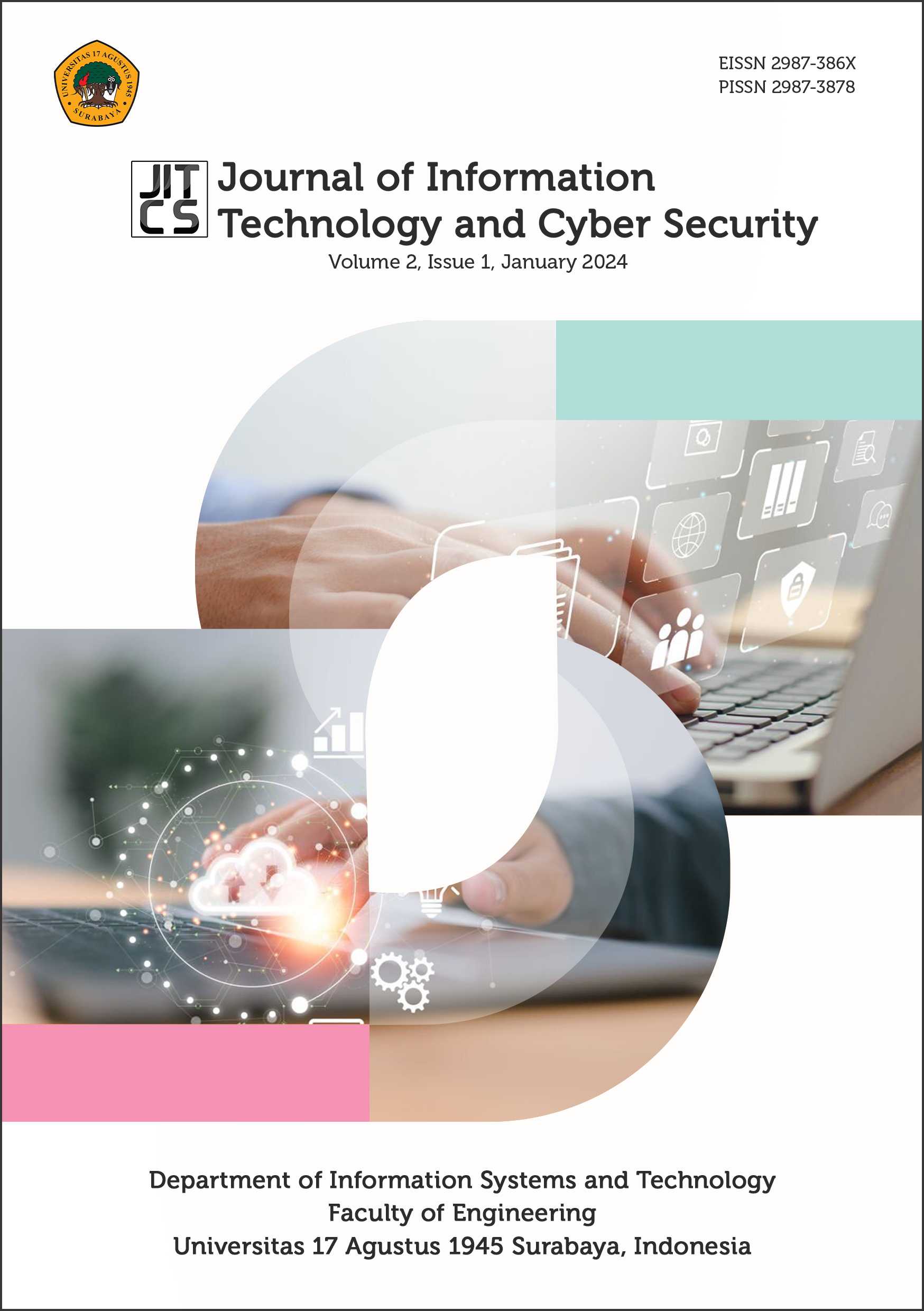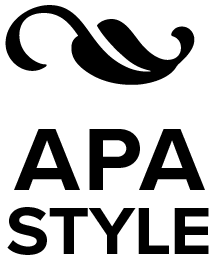Identifying Dominant Actors of Ferdy Sambo's Case Network on Social Media X/Twitter Using Social Network Analysis for Public Relations Strategy
Abstract
The Indonesian National Police (Polri) has experienced ups and downs in building a positive image in interacting with the public. This decline in trust is caused by the emergence of various issues that show the low performance of the police. In the Ferdy Sambo case study, the performance and integrity of the police is at stake and the sensitivity of the police to meet public expectations. One solution to im-prove the image is through an effective public relations strategy. However, to develop it, a deep un-derstanding of the characteristics and interaction patterns between social media through social net-work analysis is required. This research aims to identify influential X/Twitter actors in the case study of Inspector General Ferdy Sambo by applying the centrality method in Social Network User Analysis. The results of centrality analysis on the network show a wide variety of centrality levels. The @Zaindamai account dominates with the highest Degree Centrality value of 0.426829, indicating the number of connections in the network. The main role in disseminating information is held by @Zaindamai with the highest Betweenness Centrality value of 0.325748, indicating its role in connect-ing various networks. @Rizkynu46127931 stands out in Closeness Centrality with a high value of 0.497791, signifying quick and efficient access to all parts of the social network. In addition, @Rizkynu46127931 has significant influence in the network based on the highest Eigenvector Cen-trality of 0.245625. This centrality value forms the basis for formulating a more focused public relations strategy, improving the efficiency of communication with stakeholders, and designing a more concrete public relations plan.
Downloads
References
Alfian, E. (2020). Tugas dan Fungsi Kepolisian Untuk Meningkatkan Kepercayaan Publik terhadap Penegak Hukum. Legalitas: Jurnal Hukum, 12(1), 27–37. https://doi.org/10.33087/legalitas.v12i1.192
Das, K., & Sinha, S. K. (2017). Essential pre-processing tasks involved in data preparation for social network user behaviour analysis. 2017 International Conference on Intelligent Sustainable Systems (ICISS), 28–32. https://doi.org/10.1109/ISS1.2017.8389423
Ediger, D., Jiang, K., Riedy, J., Bader, D. A., Corley, C., Farber, R., & Reynolds, W. N. (2010). Massive Social Network Analysis: Mining Twitter for Social Good. 2010 39th International Conference on Parallel Processing, 583–593. https://doi.org/10.1109/ICPP.2010.66
Farisa, F. C. (2022). Survei Litbang “Kompas”: Citra Positif Polri Terus Merosot, Kini di Bawah 50 Persen. Kompas.Com. https://nasional.kompas.com/read/2022/10/27/10301721/survei-litbang-kompas-citra-positif-polri-terus-merosot-kini-di-bawah-50
Handaningtias, U. R., Praceka, P. A., & Indriyany, I. A. (2022). Kepercayaan Publik (Public Trust) Terhadap Polisi: Studi Mengenai Wacana Public Dalam #Percumalaporpolisi Dengan Pendekatan Big Data Analysis. International Journal of Demos, 4(3), 940–953. https://doi.org/10.37950/ijd.v4i3.280
Indrayani, I. I. (2022). Retorika dan Power Relations: Strategi Restorasi Citra Kepolisian Republik Indonesia pada Kasus Ferdy Sambo. Komunikatif: Jurnal Ilmiah Komunikasi, 11(2), 165–178. https://doi.org/10.33508/jk.v11i2.4270
Mujianto, H. (2018). Pengaruh Strategi Public Relations Terhadap Citra Perusahaan (Studi Kasus pada Hotel Grand Kopo Bandung). Jurnal Komunikasi Universitas Garut: Hasil Pemikiran Dan Penelitian, 4(1), 88–96. Pengaruh Strategi Public Relations Terhadap Citra Perusahaan (Studi Kasus pada Hotel Grand Kopo Bandung)
Nugraha, P. A., Joram, S. Z., Ngemas, N. S. A. T., & Ardyananda, R. (2022). Analisis Struktur Jaringan Sosial Pengguna Twitter dengan Tagar #G20Indonesia. Mediakom: Jurnal Ilmu Komunikasi, 6(1), 29–45. https://doi.org/10.35760/mkm.2022.v6i1.6471
Nurhazizah, E., Ichsan, R. N., & Widiyanesti, S. (2022). Analisis Sentimen dan Jaringan Sosial pada Penyebaran Informasi Vaksinasi di Twitter. Swabumi (Suara Wawasan Sukabumi): Ilmu Komputer, Manajemen, Dan Sosial, 10(1), 24–35. https://doi.org/10.31294/swabumi.v10i1.12474
Puspitarini, D. S., & Nuraeni, R. (2019). Pemanfaatan Media Sosial sebagai Media Promosi (Studi Deskriptif pada Happy Go Lucky House). Common: Jurnal Program Studi Ilmu Komunikasi FISIP Unikom, 3(1), 71–80. https://doi.org/10.34010/common.v3i1.1950
Radjah, E. G., Iriani, A., & Manongga, D. H. F. (2023). Analisis Terhadap Tagar #LGBT di Twitter Menggunakan Analisis Jaringan Sosial (SNA). Jurnal Media Informatika Budidarma, 7(1), 300–311. https://doi.org/10.30865/mib.v7i1.5476
Restanti, A. S. (2015). Challenges and Strategies to Develop a Positive Image of the Library. Record and Library Journal, 1(2), 94–104. https://e-journal.unair.ac.id/RLJ/article/view/7070
Supada, W. (2020). Peran Public Relations dalam Membangun Pencitraan Positif Organisasi. Communicare, 1(1), 92–100.
Syafuddin, K. (2022). Analisis Jaringan Isu #percumalaporpolisi Sebagai Bentuk Rendahnya Kepercayaan Netizen Terhadap Kepolisian di Twitter. JIKA (Jurnal Ilmu Komunikasi Andalan), 5(1), 24–42. https://unma.ac.id/jurnal/index.php/jika/article/view/3843
Tsvetovat, M., & Kouznetsov, A. (2011). Social Network Analysis for Startups: Finding Connections on the Social Web. O’Reilly Media, Inc. https://www.oreilly.com/library/view/social-network-analysis/9781449311377/
Wasserman, S., & Faust, K. (1994). Social network analysis: Methods and applications. Cambridge University Press.
Zhang, J., & Luo, Y. (2017). Degree Centrality, Betweenness Centrality, and Closeness Centrality in Social Network. Proceedings of the 2017 2nd International Conference on Modelling, Simulation and Applied Mathematics (MSAM2017), 132, 300–303. https://doi.org/10.2991/msam-17.2017.68
Copyright (c) 2024 The Author(s)

This work is licensed under a Creative Commons Attribution-NonCommercial-NoDerivatives 4.0 International License.
Copyright Notice based on COPE (Committee on Publication Ethics) for JITCS: Journal of Information Technology and Cyber Security
-
Ownership and Copyright:
- JITCS: Journal of Information Technology and Cyber Security respects the intellectual property rights of authors. The copyright for individual articles published in JITCS is retained by the respective authors, unless otherwise specified.
- The articles published in JITCS are licensed under a Creative Commons Attribution-NonCommercial-NoDerivatives 4.0 International License (CC BY-NC-ND 4.0), which permits use and distribution in any medium, provided the original work is properly cited, the use is non-commercial, and no modifications or adaptations are made.
- JITCS serves as the initial publisher of the articles, providing them with the first publication platform.
-
Permissions and Usage:
- Distribution for Non-Commercial Purposes: Permitted: Users are allowed to distribute the article for non-commercial purposes, provided the original work is properly cited and no modifications or adaptations are made.
- Distribution for Commercial Purposes: Not Permitted: The article may not be distributed for any commercial purposes without obtaining prior written permission from the author(s).
- Inclusion in a Collective Work (e.g., Anthology) for Non-Commercial Purposes: Permitted: Users are allowed to include the article in a collective work, such as an anthology, as long as the use is non-commercial and the work remains unchanged.
- Inclusion in a Collective Work for Commercial Purposes: Not Permitted: The article may not be included in any collective work or anthology intended for commercial purposes without prior permission from the author(s).
- Creation and Distribution of Revised Versions, Adaptations, or Derivative Works (e.g., Translation) for Non-Commercial Purposes: Not Permitted: Users may not create or distribute revised versions, adaptations, or derivative works, including translations, for non-commercial purposes.
- Creation and Distribution of Revised Versions, Adaptations, or Derivative Works for Commercial Purposes: Not Permitted: Users may not create or distribute revised versions, adaptations, or derivative works, including translations, for commercial purposes.
- Text or Data Mining for Non-Commercial Purposes: Permitted: Users are permitted to engage in text or data mining of the article for non-commercial research purposes, provided the original work is properly attributed.
- Text or Data Mining for Commercial Purposes: Not Permitted: Users may not engage in text or data mining of the article for commercial purposes without obtaining explicit permission from the author(s).
-
Attribution and Citation:
- Proper attribution and citation of the published work should be provided when using or referring to content from JITCS. This includes clearly indicating the authors, the title of the article, the journal name (JITCS), the volume/issue number, the publication year, and the article's DOI (Digital Object Identifier) when available.
- When adapting or modifying the published content, proper attribution to the original source should be given, and the adapted or modified content should be shared under the same CC BY-NC-ND 4.0 license.
-
Plagiarism and Copyright Infringement:
- JITCS considers plagiarism and copyright infringement as serious ethical violations. Authors are responsible for ensuring that their submitted work is original and does not infringe upon the copyright or intellectual property rights of others.
- Any allegations of plagiarism or copyright infringement will be investigated promptly and thoroughly. If proven, appropriate actions, including rejection of the manuscript, retraction of the published article, or other corrective measures, will be taken.
-
Open Access Licensing:
- JITCS supports open access publishing and encourages authors to consider publishing their work under the CC BY-NC-ND 4.0 license to promote the dissemination and use of knowledge in the field of information technology and cyber security.
- The specific terms and conditions of the CC BY-NC-ND 4.0 license will be clearly indicated on the published articles.
-
Policy Review: This Copyright Notice will be periodically reviewed and updated to ensure its continued relevance and compliance with copyright laws, ethical standards, and open access principles in scholarly publishing. Any updates or revisions to the notice will be communicated to the relevant stakeholders.
By adhering to this Copyright Notice, JITCS aims to protect the rights of authors, promote proper attribution and citation practices, and facilitate the responsible and legal use of the published content in accordance with the CC BY-NC-ND 4.0 license.




